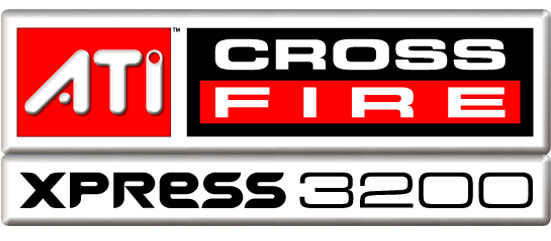MSI K9A Platinum ATI CrossFire XPress 3200 for AM2
Overview
ATI's chipset division, talented as they are, seem to have always played second fiddle to rival nVidia. Both nVidia and ATI started originally producing chipsets in 2001/2002 for low-end markets, using their experience in producing graphics processors as leverage to produce chipsets with integrated graphics abilities. Over time, both nVidia and ATI have become more experienced producing chipsets, eventually dropping the integrated graphics elements from their high-end products and targeting the enthusiast / gamer markets, who purchase more expensive add-in graphics cards. While ATI has produced some excellent chipset products over these past few years, nVidia has continued to dominate this market with a potent combination of getting products out first, more solid overall performance, and simple name-brand recognition.
ATI's largest issue is that they've always trailed nVidia in terms of time-to-market, which lets nVidia build up a solid install base before ATI's products have a chance to even hit the streets. For example, nVidia's multi-GPU enabled nForce4 SLI chipset was on the market for roughly a year before ATI's competing Radeon Xpress 200 multi-GPU enabled chipset hit the market. ATI has, however, been able to get their second generation multi-GPU chipset, the Radeon XPress 3200 chipset, out much faster, thereby allowing it to compete against nVidia's rival nForce4 SLI X16 chipset. The Radeon XPress 3200 was able to provide excellent performance and brought good overclockability to the table, in addition to consuming far less power in comparison to nVidia's solutions. The XPress 3200 was our first realization that ATI could, perhaps, one day compete head to head with nVidia in all aspects of performance. Despite its potential, the XPress 3200 never gained much market traction, due to lackluster motherboard manufacturer support and availability/performance issues in regards to their choice of Southbridge controllers.
Now that AMD has moved over to their new Socket-AM2 interface utilizing DDR2 memory modules, chipset makers have produced slightly modified and redesigned versions of their chipset for this new socket. Since AMD keeps their memory controller on the processor and not on the chipset level like Intel platforms, a full chipset-level redesign is not needed when AMD changes their processor design. However, it's clear that some changes need to be made, and it's also a great segue way in order to introduce a new generation of products with updated features. Once again, nVidia was out of the gate first with their new nForce5-series chipsets, whereas ATI's products have yet to fully materialize on the market. It looks as if things are finalizing on this front though and boards should be hitting shelves fairly soon.
We've been able to get our hands on one of the first Socket-AM2 platforms to use an ATI chipset, MSI's K9A Platinum. This board utilizes the ATI Radeon Xpress 3200 Crossfire chipset for Socket-AM2, and also is one of the first platforms on the market to use ATI's new SB600 Southbridge, the long-awaited replacement for their aging SB450 which was featured on several Socket-939 Crossfire motherboards. Let's take a look at what ATI and MSI were able to cook up for AMD's new shiny (and now fairly inexpensive) Socket-AM2 processors.







